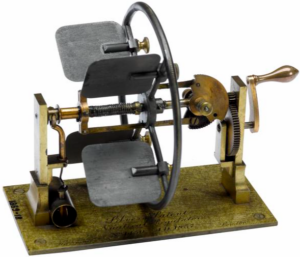Title: Inventor
Birthdate: June 17, 1813
Death Date: April 12, 1888
Plot Location: Section 112, Lot 94

There were about 860 people in Greenwich Township, New Jersey the year Thomas was born, which is 100 more than there are today. Sitting on the north shore of the Delaware Bay was a Quaker settlement where Abraham and Mary Silver were married in 1811. Abraham died a year after Thomas was born, leaving him fatherless until Mary remarried in 1819.
As a boy he displayed unusual mechanical skill. Appleton’s Cyclopedia of American Biography gives this account of his life:
“He was educated in Greenwich and Woodstown, N.J. and in Philadelphia, and became a civil engineer, but continued to devote much time to the perfection of numerous contrivances for lightening human toil and increasing the safety of travelers.
“Among the patents, upward of fifty in number granted him, were those for a grain-dryer, a fuel-saving heat-chamber, a gas-consumer, a tension-regulator, a machine for paying out submarine cables, a machinery-lubricator, a rotary ascending-railway, and clock-work for mechanical lamps. Models for some of these are at the patent office, Washington, D.C., the South Kensington Museum, London, and the Paris Conservatoire des Arts.
“The loss of the steamer San Francisco bound to California with troops in 1854 suggested his best-known invention. That vessel was wrecked through her engines becoming disabled in a severe storm, and to meet such emergencies, Mr. Silver devised his ‘marine governor,’ which was adopted by the French navy in 1855. It is also applied to many stationary engines, notably to those in the press-rooms of the great dailies in large cities. It was adopted by the British admiralty in 1864, and the example has been followed by the navies of all the chief powers except the United States…. Mr. Silver was made a member of the Franklin Institute of Philadelphia in 1855. He received the James Watt medal from the Royal Polytechnic Society of London, and a medal from Napoleon III for his ‘regulateur marine.'”
He was also the author of a pamphlet, “A Trip to the North Pole, or the Theory of the Origin of Icebergs” that was published just before he died of kidney disease in 1888.
Pictured here is a hand crank model of his nautical regulator, used in controlling the throttle valve of a marine engine.
FAMILY
Thomas married Anna Van Leuveneigh Bird in Philadelphia, but Quaker Meeting records in March, 1838 show he was removed from membership because she was not a Quaker. She was born on November 12, 1821, so this record implies their wedding was in late 1837 or early 1838 when she was 16.
They had two daughters, born in 1839 and 1841, and a son that was born around 1852 when the family lived in New York. All of them were buried in the family plot on the Yeadon side of the cemetery.

Support the Friends of Mount Moriah
Help us in our mission to restore and maintain the beautiful Mount Moriah Cemetery by donating to our cause or volunteering at one of our clean-up events.

